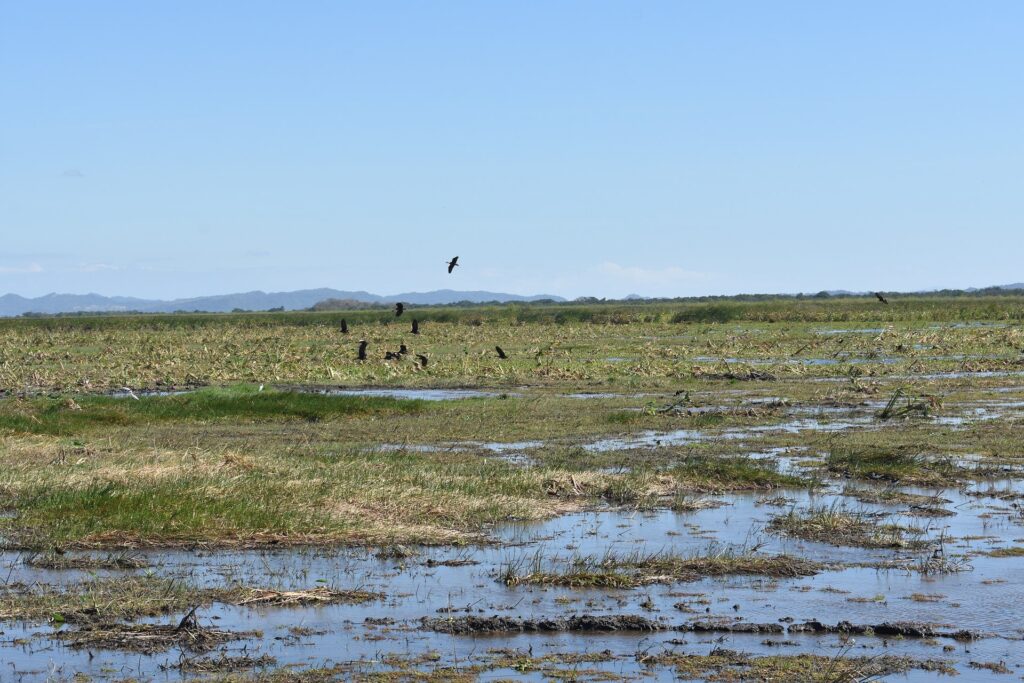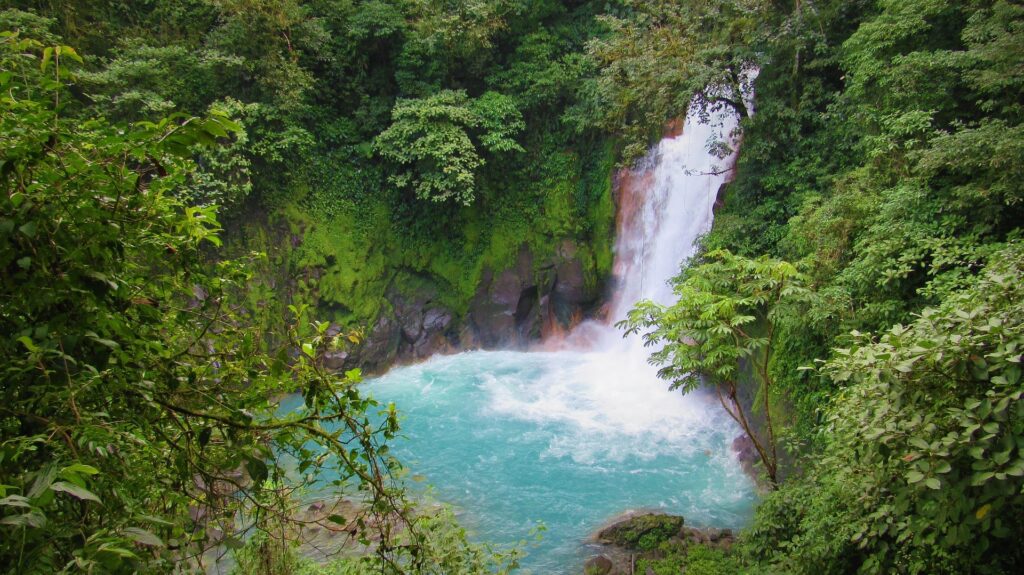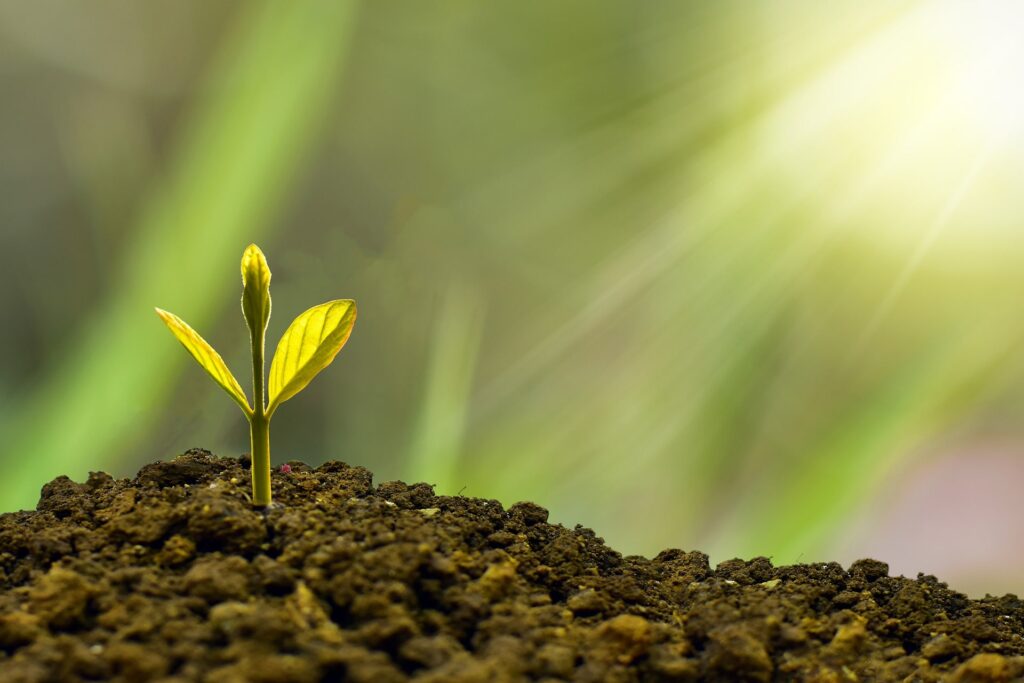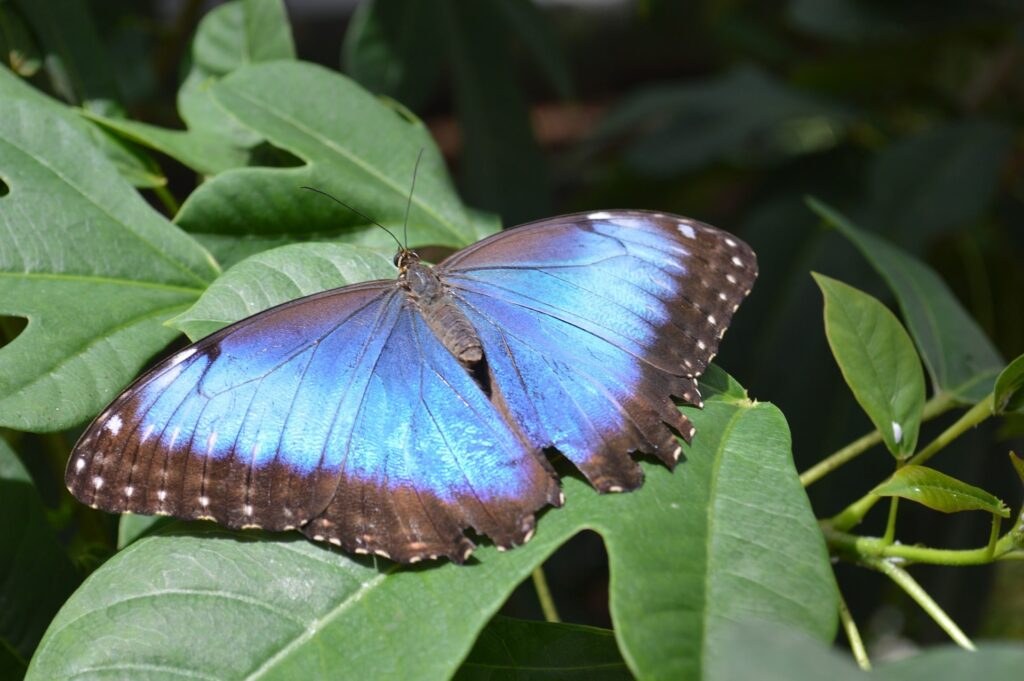Moving to and living in Costa Rica is an everyday learning experience. Beyond learning how to surf or learning how to speak Spanish, your new home offers up a variety of lessons and experiences and moments of wonder. We’ve already suggested (see Part 1) four national parks in Guanacaste, Costa Rica for your family’s educational (and adventurous) day trip, but we couldn’t stop there!
The truth is, our incredible province is home to many diverse and wonderful national parks. From wetland ecosystems to tropical dry forest, from blue rivers to towering volcanoes, this new batch of parks promises to entertain and wow you, as much as they do teach you something about this new land you call home.
For Wetland Ecosystems: Palo Verde National Park
Distance from CRIA: 47.5 miles / 76.6 kms
Fun Fact: Palo Verde’s wetland ecosystems are largely comprised of freshwater, for example marshes (which have no trees but lots of grasses) and swamps (which are comprised of trees and woody plants). But did you know that freshwater accounts for only 3% of the world’s total water? The rest is saltwater (which humans, at least, can’t survive on). We need to protect our wetlands and especially the world’s freshwater habitats!
Located at the mouth of the Tempisque River, Palo Verde National Park is an important watershed for all major area rivers – a hugely vital, wildly diverse wetland sanctuary, even more essential due to its location within Costa Rica’s driest province (that’s us, Guanacaste!).
The 45,500-acre park unfolds over 15 different habitats, from pastures to evergreen forest, but most visitors come for the wetland ecosystems: rivers, mangrove forests, salt ponds, and marshes, home to migratory and year-round resident birdlife – up to 250,000 birds at once, sometimes! What’s more, Palo Verde houses the largest concentration of waterfowl and shorebirds in Central America, so you’ll have great chances of spotting, herons, egrets, spoonbills, ibis, grebes, and more. (In fact, it’s arguable the most popular of national parks in Guanacaste, Costa Rica for birdwatching.)
Of course, the park’s wetland ecosystems are a draw for more than just birdlife: Palo Verde’s mammal and reptile species are wonderfully impressive, too: with a bit of luck, you just might spot white-faced monkeys, howler monkeys, coatimundis, crocodiles, armadillos, peccaries, and even Costa Rica’s largest population of jaguarondi (a small wildcat)!
Additional Resources:
- CREA: Parque Nacional Palo Verde (Spanish)
- NatGeo: Wetland Ecosystems
- Kids Discover: What Are Wetlands?
For Chemistry (of the most colorful kind): Tenorio Volcano National Park
Distance from CRIA: 100 miles / 162 kms
Fun Fact: Have you ever seen a Baird’s tapir? These endangered mammals – relatives of the rhinoceros, believe it or not! – are native to Costa Rica’s lowland forest, including here at the park, which protects their important habitat. (The biggest threat to tapir populations is habitat loss.) They’re particularly common at their eponymous (eponymous means "named for") lake, Tapir Lake, where they often gather at twilight for a cool drink.
You’ve almost certainly seen the photos (even if you didn’t realize you were looking at Tenorio Volcano National Park), and now it’s time to see those scenes with your own eyes: Río Celeste, the Celestial River, a baby blue river and waterfall, and one of Costa Rica’s most iconic sights.
Many people, even those who visit, don’t realize that Río Celeste is only one of the many attractions at Tenorio Volcano National Park. So, let’s start at the beginning: True to name, Tenorio Volcano National Park is home to Tenorio Volcano. And Tenorio Volcano is the reason that Celeste River exists. It all comes down to chemistry!
Here, about halfway along the park’s trails, you’ll come to the teñidero, or dye zone, where two rivers meet and their waters combine colloidal silica and copper sulfate, which react with sulfur (thanks, volcano!) to create the river’s baby-blue hues. And it really is blue: Scoop some into your hand and it’s still milky blue – pretty incredible! What’s more, your hike will also bring you past bubbling mud pots, hot springs, thermal geysers, and other volcanic sights.
Additional Resources:
- SINAC: Parque Nacional Volcán Tenorio (Spanish)
- S. Geological Survey: Water Color
- National Geographic: Baird's Tapir
For Crossing the Continental Divide: Guanacaste National Park
Distance from CRIA: 57.8 miles / 93 kms
Fun Fact: The Continental Divide (sometimes called the Great Divide) is actually a mountain ridge that runs north-south from Canada into the United States, Mexico, and Central America. To its east, all rivers and streams flow out to the Gulf of Mexico, the Atlantic Ocean, and the Caribbean Sea; to its west, all rivers and streams flow out to the Pacific Ocean.
Created in 1989 to link the vast habitats and ecologies between Santa Rosa National Park and the high-altitude cloud forests surrounding Orosi Volcano and Cacao Volcano, Guanacaste National Park is a sign of hope: a government and a people’s dedication to creating a habitat bridge to ensure enough room to roam for jaguars and mountain lions (which have notoriously large, single-cat ranges) and a biological corridor for resident and migratory bird species.
The park’s genesis is a very interesting story, rooted in the vision of Dr. Daniel Janzen, an evolutionary ecologist and conservationist who sought to show the world “how to grow a national park.” To do so, he traveled to Costa Rica, where beef prices were low and cattle ranch owners were eager to sell, and created one of the most inspiring national parks in Guanacaste, Costa Rica: more than 30 years later, the land is regenerating faster than scientists predicted and the foreseen biological corridor has come to life.
There’s so much to see here, and it’s all so diverse: From the lowland dry forests near Santa Rosa to the dense and drenched rain forests of Cacao Volcano to the cloud-draped surrounds of Orosi Volcano, you can hike your way from one world to another. And along the way, you’ll cross the Continental Divide, marking the passage from the Pacific to the Caribbean.
Additional Resources:
- SINAC: Área de Conservación Guanacaste (Includes GNP; in Spanish)
- NatGeo: How to Regrow a Forest
- Bio: Dr. Daniel Janzen
For Rare Tropical Dry Forest: Diriá National Park
Distance from CRIA: 30.5 miles / 49 kms
Fun Fact: Did you know that, even though it’s never “winter” (in the snowy sense) in Costa Rica, we still have deciduous trees? “Deciduous” means that they lose their leaves at the end of the season which, in Costa Rica, usually means at the end of the rainy season. Tropical dry forest, like that of Diriá National Park, is full of deciduous trees that drop their leaves during the driest months, in order to conserve water. This, in turn, allows sunlight to penetrate the now-barer forest canopy and reach the forest floor, to provide life to other species (which are now covered in a helpful layer of leaf “mulch”). The forest's symbiosis is amazing!
You wouldn’t think of a national park as a “best-kept secret” and yet, Diriá National Park – note: pronounce it deer-ee-AH, emphasis on the a – is definitely something of a best-kept secret in Guanacaste (let alone the national parks in Guanacaste, Costa Rica). At the very least, it’s the least known and lowest pomp-and-circumstance park in the province.
Because, when it comes to precious world ecosystems, Diriá offers one of the most important: rare tropical dry forest, the most endangered major tropical ecosystem in the world. (Somewhat contrary to the popular belief about rainforests.) Consider this: When the Spanish Colonialists arrived in the New World, there were 550,000 square kilometers (about 212,356 square miles) of dry forest; today only 0.09% (480 square kilometers) has official conservation status (see Resource #3, below). In the entire Americas. And Diriá National Park is home to some of it.
Here, in the lower elevation of the park, you and your family can explore 10,000 acres of this incredibly rare, wonderfully abundant tropical dry forest and, at high (and cooler) elevations, premontane rain forest – much of it virgin or primary forest. This means it has never been cut, felled, farmed, or otherwise changed by humans, making it all the rarer and more important to Costa Rica and the world’s ecosystem. Keep your eyes peeled for towering trees – rosewoods and Guanacaste trees, spiky pochotes and gumbo limbos – as well as 134+ bird species, butterflies, plus howler monkeys, coatimundis, anteaters, white-faced monkeys, and other mammals large and small.
Additional Resources:
- SINAC: Parque Nacional Diriá (Spanish)
- NatGeo: Deforestation
- Biodiversity: Tropical Dry Forests - The Most Endangered Major Tropical Ecosystem
Inspire a Love of Learning at CRIA
Great parents want great things for their children. Help your children find their inspiration, their interests, and their passions at CRIA.
We don’t want you to just take our word for it, though. Come and visit. Tour our campus. Poke your head into one of our classes, a swim class, or an extracurricular. Get a feel for our community. See if it inspires you.
Whether you’re wondering about tuition & fees or special education in Costa Rica, cafeteria nutrition or the admissions process, we’re here to help. And when you’re ready to take the next step – to come, visit, and get your questions answered in person – we’d love to welcome you!
Get in touch to schedule a campus visit. We look forward to it!





